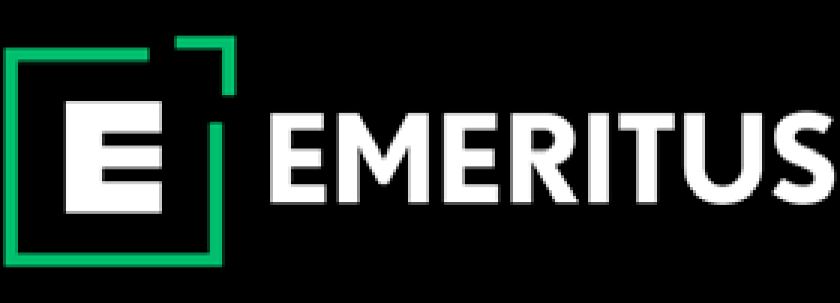User Friction Hierarchy: What are the 3 Types of Friction?

In an age where organizations refer to customers as God, ensuring smooth User Experience (UX) is paramount for growth. UserZoom’s The State of UX Report 2022 highlights that over 60% of organizations acknowledge that UX positively impacts customer satisfaction and brand perception. However, user friction is a significant challenge for product managers or developers to enhance customer satisfaction. It refers to the various obstacles customers face while interacting with a product. This blog answers the three types of friction—interaction, cognitive, and emotional. It also attempts to explain various types of friction impact. Still, wondering what are the 3 types of friction? Read to know more!
In this blog, we will learn about the 3 types of friction:
- Interaction Friction
- Cognitive Friction
- Emotional Friction
- Interplay Between Friction Types
- User-Centric Design Strategies
- Future Trends and Challenges
What are the 3 Types of Friction?
Interaction Friction
Definition and Explanation of Interaction Friction
What are the different types of friction in the user friction hierarchy? Let’s start with the first one—interaction friction.
An intuitive UX is crucial for boosting customer engagement and retention. It involves creating a simple design that allows users to navigate the website or app smoothly without specific instructions. However, interaction friction makes the user experience less intuitive. It occurs when users are unable to access a product effectively, creating barriers to a smooth interaction. For example, a lengthy registration process, too many elements creating confusion, inconsistent design patterns, and an unclear Call-to-Action (CTA). Let us dive further into what are the 3 types of friction.
ALSO READ: Guide to Product Management vs. Product Marketing
Factors Contributing to Interaction Friction
1. Complex Navigation
It involves multiple menu options, a lack of a proper flow, and several pages or tabs containing irrelevant information.
2. Unclear Calls-to-Action
CTAs should be clear and guide the users to take relevant action. For example, if you want them to contact your business, write ‘Contact Us’ on the CTA button. However, an unclear CTA can create interaction friction.
3. Slow Response Time
Slow response time is one of the most common factors that make organizations lose leads. Delay in uploading elements makes users lose interest and result in dissatisfaction. Ultimately, it decreases user engagement.
Consequences of High Interaction Friction
- Decreases user engagement and results in poor conversions
- Increases cart abandonment for e-commerce businesses
- Negative user reviews and brand perception among users
- Reduces customer retention
- Generates poor Return on Investment (ROI)
Strategies to Reduce Interaction Friction
1. Intuitive Design
Reducing interaction friction requires creating an intuitive design with simple features like swiping and tapping, as well as simple icons that align with users’ requirements.
2. Streamlined Workflows
Streamlining workflows means eliminating extra steps to make the process simpler and reduce cognitive load on the user.
3. Responsive Interfaces
A responsive interface should be able to adapt easily to various screen sizes and devices. It involves creating simple layouts that can easily adjust to phones or laptops. Moreover, optimizing touch features also comes under creating responsive interfaces.
ALSO READ: Why 2023 is the Best Year to Move into a Career in Product?
Cognitive Friction
Definition and Examination of Cognitive Friction
Cognitive friction is the mental load or strain faced by users because of a complicated product design. Here, users feel overwhelmed because of information overload or inconsistent information. This makes it difficult for them to make decisions because of the extra mental effort. Cognitive friction primarily involves these four aspects: complexity in executing tasks, difficulty navigating information, too much information to process, and delayed or complex decision-making processes.
The common examples of cognitive friction are complex navigation structures resulting in inconsistent or ambiguous information. Moreover, confusing or elaborate forms that require users to answer irrelevant questions or cryptic messages that do not convey the issues properly are also examples of cognitive friction.
Factors That Contribute to Cognitive Friction
1. Complex Navigation
Navigating cluttered layouts, unnecessary steps to complete a task, and inconsistent information requires a lot of mental effort. This delays the decision-making process and increases cognitive friction.
2. Ambiguous Language
Vague instructions or messages and poor presentation require a lot of time and cognitive effort to interpret the information. This inevitably results in high cognitive friction.
3. Excessive Mental Load
Irrelevant or excessive information is a significant contributor to cognitive friction. Why? Because users have to grasp too much data in less time. Hence, this creates a mental load by making users feel overwhelmed.
Impact of Cognitive Friction
- Increase in User Errors
The high mental pressure created as a result of cognitive friction makes it difficult for users to perform tasks effectively. It also reduces their efficiency and increases errors.
- Impacts Overall Usability
Cognitive friction leads to frustration, making it difficult for users to successfully use the product. Hence, it impacts their overall usability.
- Steep Learning Curve
Cognitive friction creates difficulty in understanding how to use the product effectively, resulting in delayed learning. As a matter of fact, the learning curve becomes too steep, impacting the overall usability of the product.
Solutions to Minimize Cognitive Friction
- Clear Information
Simple and direct information reduces the mental load on the user, minimizing cognitive friction. Hence, product designers should offer information in a language familiar to the users. Moreover, designers could also create an option for the users to switch to their preferred languages.
- Concise Content
In addition to providing clear information, product teams should offer concise data so that users can easily grasp the information and perform tasks.
- Progressive Disclosure
Instead of offering too many instructions in one go, product teams can focus on slowly introducing new information. This is also known as progressive disclosure and can significantly reduce the users’ mental load.
ALSO READ: How are the Best Product Design Courses Shaping the Future of the Industry
Emotional Friction
Definition and Examination of Emotional Friction
Emotional friction stands last in the “What are the three types of friction” hierarchy. Inducing positive emotions like joy, satisfaction, excitement, pleasure, surprise, and delight through your product UX helps organizations gain customer loyalty. However, ensuring these positive emotions is often a critical challenge for businesses, and this results in emotional friction. It essentially refers to negative emotions such as frustration, distrust, confusion, dissatisfaction, or disappointment experienced by the users. This happens on account of negative communication, frustrating error messages, and users’ feedback being ignored.
Factors Contributing to Emotional Friction
-
Poor Feedback Mechanisms
The lack of a proper channel to collect feedback from users makes them feel unheard, as their concerns are not resolved. This results in feelings of disappointment, leading to emotional friction.
- Lack of Empathy in Design
While creating a product design, the product team has to cater to the demands, needs, and preferences of their customers. However, designs that do not consider users’ perspectives lack empathy, resulting in distrust and loss of professionalism. Moreover, users will also feel disrespected and not valued, resulting in emotional friction.
- Inconsistency in Design and Branding
Once you build a brand, customers often start to recognize you with your design style. However, inconsistency in product design and branding across different platforms creates confusion and distrust, resulting in cognitive friction.
ALSO READ: 5 Impactful Ways to Develop Product and Consumer Interest in the Market
Effects of Emotional Friction
- Decreases User Engagement
Emotional friction can make users discontinue using a product. Why? Since it prevents them from accomplishing their goals, leading to low user engagement.
- Reduces User Satisfaction
Emotional friction results in user dissatisfaction as they feel overwhelmed and have an emotional disconnect with the product and brand.
- Creates a Negative Brand Perception
When users become dissatisfied because of emotional friction, they often leave bad reviews, asking people to avoid using the product. This creates a negative brand perception, resulting in a decline in users and profitability.
Approaches to Mitigate Emotional Friction
- Positive Micro-Interactions
One of the best ways to reduce emotional friction is to interact with the users at regular intervals through positive messages like fun animations or feedback acknowledgment messages.
- Empathetic Design
An empathetic design refers to one that understands the needs, challenges, and preferences of all types of users. It also incorporates all the feedback and makes the customers feel valued.
- Effective Error Handling
Effectively handling errors makes users feel reassured and reduces emotional friction. It can be done with clear messages that convey the error, ensuring user data remains intact during such errors and offering quick support to resolve the error.
ALSO READ: How Product Design Courses Can Take Your Design Career to New Heights

Interplay Between the 3 Types of Friction
Now that we have been able to successfully explain various types of friction, it is also essential to note that these user frictions are not necessarily independent and often overlap. Here are a few examples to better understand the impact of what are the three types of friction:
1. Mobile App Registration
A lengthy or complicated app registration form that displays ambiguous error messages results in interaction friction. Moreover, if the form asks irrelevant questions or unnecessary details, it builds cognitive friction. These two frictions together lead to user frustration and lack of engagement, resulting in emotional friction. If the product team simplifies the mobile app registration by adding a one-step login feature through Gmail or LinkedIn, it can address all three frictions.
2. E-Commerce Check-Out
Another example is an e-commerce website with a bad user interface. For example, multiple steps before checking out or a difficult process to apply a coupon code. It can confuse the users, making it frustrating for them to place an order. It also results in cognitive friction as the users have to go through multiple steps before finally placing the order. Ultimately, the challenging features of the website build emotional friction. A simple checkout process with clear instructions can eliminate all three user frictions.
All these frictions occurring simultaneously create a compounding effect, leading to a negative customer experience. Businesses must focus on providing a holistic user experience while tackling what are the three types of friction. Here are some effective ways to do that:
- Do comprehensive user research through surveys or interviews and collect insights on the challenges customers face.
- Visualize the entire user journey from the initial task to the end step. It helps designers and developers understand friction points.
- Conducting A/B testing and continuously refining the user experience.
ALSO READ: Product Design and Development 101: Your Comprehensive Guide in 2023
User-Centric Design Strategies Across the 3 Types of Friction
Building a user-centric design is an effective practice to explain what are the 3 types of friction and how to mitigate them. It is an iterative approach that focuses solely on the needs and demands of the users while designing a product. User-centric design is based on four critical elements—clear visibility, which helps users understand the theme of the product at a glance, easy accessibility, simple and clear language, and text legibility. When teams understand and integrate the customers’ needs, they can design products that align with user expectations, thus reducing friction. The most effective user-centric design principles and methodologies that also help manage what are the 3 types of friction are:
User-Centric Design Principles
- Involving customers in the product development process in the initial stages for better decision-making. This will give you a clearer picture of how to mitigate what are the three types of friction.
- Conducting regular usability assessments and actively incorporating user feedback in the design process to understand friction points.
- Refining the user experience continuously to reduce the impact of what are the three types of friction.
Design Strategies to Reduce Friction
- Conducting field research to obtain first-hand customer data.
- Creating ideal user personas to define your target audience and understand their pain points.
- Mapping the user journey and identifying challenges for customers at each stage to resolve what are the three types of friction.
Integrating friction reduction strategies into the design thinking process ensures user-centricity, empathizes with the users, and develops effective prototypes. It essentially helps product teams manage what are the three types of friction.
ALSO READ: What are the Steps of Product Design & Its Process
Future Trends and Challenges: The 3 Types of Friction
The following are some of the future product design trends. They will positively impact the hierarchy of user friction and redefine what are the different types of friction:
1. Minimalism
Product designers will be focusing on minimalist designs to reduce cognitive friction. Simple and clear designs will allow users to easily navigate interfaces.
2. Mobile-First Design
This trend will require product designers to optimize product design, layout, and functionality for smaller screens.
3. Voice User Interfaces (VUI)
The majority of products in the future will have VUI, allowing users to give voice commands. This will help reduce both interactive and cognitive friction.
4. Sustainable Design
In the future, product designers and developers will emphasize sustainable design and functionality. Moreover, it could help reduce emotional friction by enabling users to switch to sustainable products.
Taking all of these trends into consideration, one of the biggest challenges product designers will face in managing what are the three types of friction is keeping up with the rapidly changing user expectations and the advancement of new technologies.
ALSO READ: Know the Benefits of Choosing the Right Product Design Management Course
To conclude, the current business landscape is gradually shifting towards product-led business models, leading to cutthroat competition. Organizations need skilled professionals with strong UX research and product design expertise to boost customer engagement, convert leads, and retain customers. Pursuing Emeritus’ online product management courses is an excellent way to gain advanced knowledge of product design, user experience, and customer research. It offers in-depth knowledge of what are the three types of friction. Explore these courses today to emerge as a leader in the product and design field.
Write to us at content@emeritus.org


